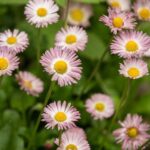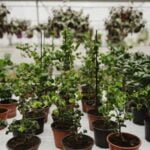Small landscaping ideas are essential for making the most of limited outdoor space. Whether you have a small yard, balcony, or patio, there are numerous creative ways to enhance and beautify your outdoor area. This article will explore various small landscaping ideas to help you maximize the potential of your compact outdoor spaces while creating a beautiful and functional environment.
Assessing the size and shape of your yard is crucial when it comes to implementing small landscaping ideas. Understanding the dimensions of your outdoor space will guide you in selecting the most suitable plants, features, and hardscaping elements. From choosing the right flowers, shrubs, and trees to incorporating pavers and pathways, this article will provide valuable insight on enhancing small landscapes.
In addition to greenery, small landscaping involves making use of vertical spaces such as walls and fences for planting. Moreover, incorporating focal points and inviting seating areas can transform a small outdoor space into an inviting oasis. With the right design elements and maintenance tips, even the smallest of yards can be transformed into a stunning outdoor retreat that is both visually appealing and functional.
Understanding Your Space
When it comes to small landscaping ideas, understanding the size and shape of your yard is crucial for creating a beautiful outdoor space. Assessing your yard’s dimensions and layout will help you determine the best layout for plants, pathways, and seating areas. Whether your yard is long and narrow, small and square, or irregularly shaped, there are numerous ways to make the most of your outdoor space.
One important aspect of understanding your space is taking note of any existing features such as trees, slopes, or structures that may impact your landscaping plans. For example, a tree may provide shade for a seating area or act as a focal point in the garden.
Alternatively, a sloped yard may require terracing or retaining walls to create level planting areas. By carefully assessing these elements, you can integrate them into your small landscaping design and use them to your advantage.
In addition to physical features, consider how you currently use the space and how you would like to use it in the future. Are you looking for an area for outdoor dining? Do you want space for children or pets to play? Understanding these needs will help guide your small landscaping ideas and ensure that your space is not only beautiful but also functional.
| Aspect | Consideration |
|---|---|
| Physical Features | Trees, slopes, structures |
| Current & Future Use | Outdoor dining area, play space for children/pets |
Small-Scale Planting
Small landscaping ideas are all about making the most of limited outdoor space. When it comes to small-scale planting, it’s important to carefully select the right flowers, shrubs, and trees that will thrive without overcrowding the area.
First, consider the size and shape of your yard – smaller yards may benefit from plants that have a compact growth habit or can be easily shaped through pruning. Additionally, think about whether you want to incorporate a mix of evergreen and flowering plants for year-round interest.
When choosing flowers for small spaces, opt for varieties that are not only visually appealing but also low-maintenance. Petunias, marigolds, and impatiens are easy-to-grow annuals that add color to small gardens without overwhelming them. For perennials, look for options like hostas, ornamental grasses, and daylilies that offer texture and visual interest throughout the seasons.
In terms of shrubs and trees, prioritize ones with a smaller mature size or ones that can be pruned to maintain their shape. Dwarf varieties of popular shrubs like boxwood and hydrangea are ideal choices for creating structure in small landscapes. For trees, consider columnar or weeping forms that won’t spread out too wide over time. Japanese maples and crape myrtles are excellent selections for bringing height and architectural interest without taking up excessive space.
| Plants | Attributes |
|---|---|
| Petunias | Colorful, low-maintenance annuals |
| Hostas | Perennials with varied foliage and long-lasting blooms |
| Dwarf Boxwood | Compact shrubs suitable for shaping in small gardens |
Hardscaping
When it comes to small landscaping ideas, hardscaping plays a crucial role in maximizing the potential of your outdoor space. Incorporating pavers, stones, and pathways can help create visual interest, define different areas within your yard, and even make it appear larger than it actually is. Here are some ways you can incorporate hardscaping into your small landscape:
- Create a pathway: A well-designed pathway can add structure to your small yard while also providing a practical way to navigate through the space. Whether you opt for a straight or curved path, using materials like pavers or stepping stones can add texture and contrast to the surrounding greenery.
- Define separate areas: In a small landscape, it’s important to clearly delineate different zones such as dining or lounging areas. Using pavers or stones to create borders or raised platforms can help visually separate these spaces while still maintaining a cohesive look.
- Integrate vertical elements: Incorporating vertical elements such as retaining walls or stacked stone planters can add depth to a small landscape. These features not only provide additional planting opportunities but also create visual interest and contribute to the overall design aesthetic.
Incorporating hardscaping into your small landscape doesn’t have to be a daunting task. With careful planning and thoughtful design choices, you can create an outdoor space that is not only functional but also visually appealing. By utilizing materials like pavers, stones, and pathways, you can transform your small yard into an inviting and stylish retreat.
Making the Most of Vertical Space
Utilizing Walls for Vertical Gardens
When working with a small outdoor space, it’s essential to make the most of every inch available, including vertical surfaces. One great way to maximize your planting area is by creating a vertical garden on a wall or fence. This can be achieved by installing specially designed planters or even utilizing hanging baskets.
Consider choosing plants that thrive in these conditions, such as trailing vines, ferns, and certain herbs. Not only does this add visual interest to your landscape, but it also maximizes the use of space.
Adding Climbing Plants to Fences
Another effective way to utilize walls and fences for planting is by incorporating climbing plants. These types of plants can be trained to grow upward, covering unsightly fencing or walls with lush greenery and colorful flowers. Some popular options for small landscaping ideas include climbing roses, clematis, jasmine, and ivy. By adding these plants to your fences, you not only create a beautiful natural backdrop but also give your small outdoor space an added sense of privacy.
Creating a Living Wall
For those looking to take their small landscaping ideas to the next level, consider creating a living wall as part of your vertical space utilization. This involves installing modular panels or structures filled with plants that grow vertically rather than horizontally.
Living walls not only add beauty and texture to your outdoor area but also provide environmental benefits such as improved air quality and insulation. With the right selection of plants suited for vertical growth, you can turn even the smallest outdoor space into a thriving green oasis.
Creating Focal Points
When it comes to small landscaping ideas, creating focal points is essential to maximizing the impact of your outdoor space. By strategically adding accents and features, you can draw the eye and elevate the aesthetic appeal of a small landscape. Whether it’s a unique sculpture, a beautifully crafted fountain, or a striking piece of furniture, focal points can add personality and charm to your outdoor area.
One way to create a focal point in a small landscape is by incorporating a water feature. A small stone fountain or a recirculating water feature not only adds visual interest but also provides soothing sounds that can enhance the outdoor ambiance. Additionally, strategically placed lighting around the water feature can make it stand out even more, especially in the evening hours.
Another effective way to draw attention in a small landscape is by using colorful planters and containers. Placing vibrant flowers or lush greenery in eye-catching pots and urns can create visual interest and serve as focal points throughout the yard. These planters can be placed strategically near seating areas or at key intersections in the garden to create an impactful visual effect.
Incorporating art pieces such as sculptures or ornamental structures can also serve as focal points in a small landscape. Whether it’s a modern metal sculpture or a whimsical garden gnome, these unique features can add character and personality to your outdoor space.
By selecting pieces that resonate with your personal style, you can create an inviting and visually captivating environment in your small yard. These are just some of the many ways you can incorporate focal points into your small landscaping ideas, ensuring that every inch of your outdoor space shines with beauty and charm.
Maximizing Functionality
When working with a small outdoor space, maximizing functionality becomes crucial to make the most of the area. Incorporating seating, dining, and entertainment areas can transform your small landscape into a cozy and inviting outdoor retreat. Here are some small landscaping ideas to help you create functional and beautiful outdoor spaces:
- Multi-functional Furniture: Invest in versatile furniture pieces that can serve multiple purposes, such as a bench with built-in storage or a table that can convert into a coffee table or dining table.
- Vertical Gardens: Utilize vertical space for planting by installing wall-mounted planters or creating a living wall. This not only adds greenery to your outdoor area but also maximizes the use of space.
- Compact Dining Sets: Look for compact dining sets or bistro tables and chairs that are specifically designed for small outdoor spaces. These can provide a comfortable spot for al fresco dining without taking up too much room.
In addition to these ideas, incorporating seating, dining, and entertainment areas in small landscapes requires thoughtful planning and creative solutions. Consider adding built-in seating like benches along the perimeter of the yard to save space while providing ample seating for guests. Compact fire pits or outdoor heating options can also extend the usability of your outdoor space into the cooler months and create a cozy ambiance for entertaining.
Whether you have a tiny balcony, patio, or courtyard, maximizing functionality in your small landscape is possible with the right tools and design elements. By carefully selecting furniture, utilizing vertical space for planting, and integrating multi-functional features, you can create an inviting and practical outdoor oasis even in limited areas. With these small landscaping ideas in mind, you can transform your compact outdoor space into a stylish and functional retreat perfect for relaxation and entertaining.
Maintenance Tips
Regular Watering and Fertilizing
One of the most important maintenance tasks for a small landscape is regular watering and fertilizing. Since small spaces can dry out quickly, it’s important to water your plants regularly, especially during hot or dry spells. Consider installing a drip irrigation system or soaker hoses to ensure that each plant gets the water it needs without wasting too much.
Weeding and Pruning
Weeding and pruning are essential for keeping your small landscape looking tidy and well-maintained. Regularly check for weeds and remove them to prevent them from taking over your garden. Additionally, prune your plants as needed to encourage healthy growth and maintain their shape. This will not only keep your landscape looking neat but also promote the health of your plants.
Seasonal Clean-Up
To keep your small landscape looking great year-round, it’s essential to perform seasonal clean-up tasks. In the fall, remove any dead leaves or debris to prevent them from smothering your plants over winter. In the spring, clean up any remaining debris and freshen up your mulch. Additionally, consider refreshing your flower bed with new plants or flowers to bring color back into your space.
By following these maintenance tips for small landscaping ideas, you can keep your outdoor space looking beautiful and inviting throughout the year. With regular care and attention, even a small garden or yard can become a stunning oasis that you can enjoy every day.
Conclusion
In conclusion, small landscaping ideas can truly transform your outdoor space into a beautiful and functional area that you can enjoy year-round. By understanding the size and shape of your yard, choosing the right plants and hardscaping elements, utilizing vertical space, creating focal points, and incorporating seating and dining areas, you can make the most of even the smallest outdoor spaces.
With the right small landscaping ideas, you can create a lush and inviting garden, a cozy and intimate patio, or a charming and practical backyard oasis. Whether you have a tiny urban terrace or a compact suburban yard, there are plenty of options for maximizing your outdoor space. From container gardens to vertical planters to multifunctional furniture, there are endless ways to make your small outdoor area both beautiful and practical.
Incorporating maintenance tips such as regular pruning, weeding, watering schedules, and seasonal care will ensure that your small landscape continues to look great throughout the year. With some creativity and careful planning, even the smallest outdoor spaces can be transformed into stunning retreats that reflect your personal style and provide a welcoming environment for relaxing or entertaining.
Frequently Asked Questions
How Do You Landscape a Small Area?
When landscaping a small area, it’s important to make the most of the space by carefully selecting plants and features that will complement the size. Consider using small shrubs, trees, and ground cover plants to maximize greenery without overwhelming the space.
Utilizing potted plants, vertical gardens, or hanging baskets can also add visual interest without taking up valuable ground space. Incorporating pathways, decorative rocks or mulch, and strategically placed lighting can help create a cohesive and inviting outdoor area.
What Is the Least Expensive Way to Landscape?
The least expensive way to landscape typically involves DIY approaches such as propagating plants from cuttings or seeds, utilizing recycled materials like pallets for garden beds or fences, and opting for native or locally sourced plants that require less maintenance. Choosing perennials over annuals can also save money in the long run since they return year after year.
Additionally, doing thorough research and planning before starting any landscaping project can help avoid costly mistakes and ensure efficient use of resources.
What Is the Cheapest Landscape Fill?
The cheapest landscape fill often depends on local availability and specific needs. In some areas, common low-cost options might include sand, gravel, wood chips, or bark mulch. Utilizing compost or leaf mold as fill material not only provides nutrients to the soil but also reduces waste.
Some homeowners may even find free fill options through local landscaping companies or construction sites looking to dispose of excess soil or gravel. It’s important to consider factors such as drainage requirements and plant compatibility when choosing fill material to ensure successful landscaping results.

Welcome to my gardening blog! I am passionate about plants and enjoy sharing my knowledge and experiences with others. In this blog, I will write about everything related to gardening, from tips on how to get started to updates on my own garden projects.





